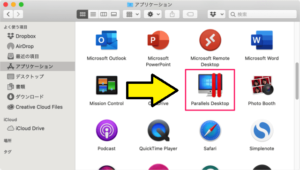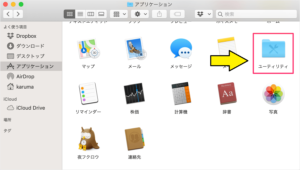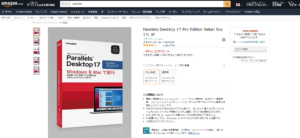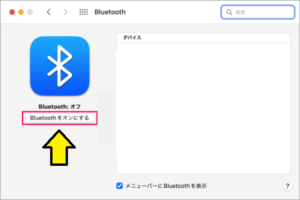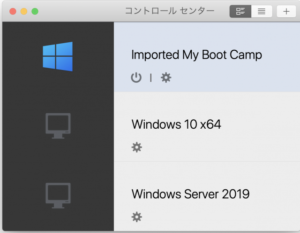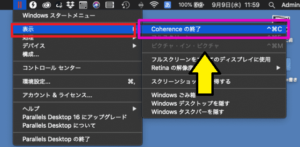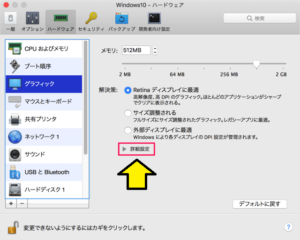*This article contains some promotional material.
Pararells Desktop vs VMWare Fusion! Which is better?
To run Windows on a Mac device without rebooting the device or rebooting to another OS, you must use virtual machine software.
Among such virtualization software, the "VMwareFusion' and 'ParallelsDesktopis particularly well-known for its
In this article.VMwareFusionandParallelsDesktopFor two of the
- performance
- ease of use
- functionality
We will compare them from all perspectives, including the following, and explain which is superior.
If you are not sure which software to choose, please refer to this article.
Parallelsschool (e.g. of ikebana)Completely free trial versionis available for a risk-free trial. Parallels also offers discount campaigns from time to time.For the latest discount information on Parallels, please visit the official website atPlease check it out from the following page.
↓arrow (mark or symbol) Click here for the official Parallels website
*Free trial is also available here.
Pararells Desktop vs. VMWare Fusion! Which is better?
Compare the whole picture

First.VMwareFusionandParallelsDesktopPlease see the table below for a comparison of the two, especially in terms of points of difference between the two.
| feature | VMwareFusion | ParallelsDesktop |
| Use multiple operating systems simultaneously without rebooting | Intel only | Intel and Apple M1 chips |
| Download and install Windows 10 with one click | an unknown | ✔ |
| Download Ubuntu, Fedora, CentOS, Mint and Debian with one click | an unknown | ✔ |
| Copy & paste between operating systems | ✔ | ✔ |
| File sharing between Windows and Mac | ✔ | ✔ |
| Touch Bar control for Windows applications | an unknown | ✔ |
| Advanced security settings |
an unknown | ✔ |
| Support for trackpad zoom and rotation gestures for Windows 10 apps | an unknown | ✔ |
| money-back guarantee | thirty days | thirty days |
| Premium 24/7 telephone and email support | an unknown | ✔ |
From this table, it would seem that Parallels Desktop is the better choice.
Comparison in terms of price
Next is a comparison in terms of price.
| free version | ✔ | ✔ |
| money-back guarantee | thirty days | thirty days |
| free trial (e.g. of software, game, etc.) | 14 days for Pro and Business editions | thirty days |
| New Application |
Parallels Desktop 17 - 79.99 USD/year (10219 yen) - Students: $39.99/year (5109 yen) Professional Edition - 99.99 USD/year (12773 yen) Business Edition - 99.99 USD/year (12773 yen) |
No, sir. |
| New permanent license |
Parallels Desktop 17 - 99.99 U.S. dollars (12773 yen) |
VMware Fusion 12 Player - 149 USD (19034 yen) for commercial use VMware Fusion 12 Pro - 199 U.S. dollars (25421 yen) VMware Fusion 12 Pro + Support Basic 1 year - 249 U.S. dollars (31808 yen)
|
| Upgrade to perpetual license | 49.99 (6387 yen ) |
|
For Parallels Desktop
Parallels's pricing plan is on a yearly subscription basis.
The standard license for home and student use is $79.99 ($10219) per year.
Parallels Professional and Business Editions are $99.99 ($12773)/year.
Each offers a 14-day free trial so you can try the program to see if it meets your needs.
For VMWare Fusion
VMware Fusion, on the other hand, is only available for a one-time buy-in fee.
Slightly more expensive than the Parallels subscription fee, but once licensed, it can be used forever; VMware Fusion 12 Player costs $149 (about $1,934) per payment.
There is also a pro version for $199 (about $25421), or $241 (about $31808) for the pro version including support; VMware Fusion also offers a free 30-day trial to test the hypervisor.
However, of the two, only VMware Fusion offers a free basic version for personal use.
Supported Windows OS versions
Parallels Desktop 17

Parallels is constantly updating Parallels Desktop to keep pace with Apple's MacOS updates.
Since Microsoft will be releasing a major new version of Windows this year, the first task of Parallels Desktop 17 was to ensure compatibility with both MacOS Monterey and Windows 11.
Parallels Desktop 17.1 for Mac improves support for Windows 11 virtual machines and increases stability by implementing the Virtual Trusted Platform Module (vTPM) by default for [all future and past Windows 11 VMs].
Parallels 17.1 also fully supports MacOS Monterey as the host OS, enhancing the user experience when running MacOS Monterey in a VM on an M1 Mac.
Windows 11 requires a hardware-based TPM chip to run, which limits compatibility with older PC computers and prevents Intel Macs from running it via Boot Camp. On the other hand, Macs with Apple silicon do not have Boot Camp capability and do not natively support the ARM-based version of Windows 11.
Parallels introduces default support for vTPM, automatically providing Windows 11 compatibility for Intel Mac and Apple Silicon Mac owners using the Insider Preview build of Windows 11 for ARM machines The following is a list of the supported Windows 11 builds.
In addition to automatic vTPM support, version 17.1 allows MacOS Monterey VMs on Apple M1 Macs to install Parallels Tools and use copy and paste, an integration feature between the VM and the primary MacOS. In addition, the default virtual machine disk size has been increased from 32GB to 64GB.
In addition to Windows, other operating systems such as Linux, Unix, Ubuntu, and MacOS Server can be run on virtual machines.
VMware Fusion 12

For years, VMWare Fusion, along with Parallels Desktop, has been vying for the top spot in the Mac virtualization market, releasing updates on a regular basis. In recent years, however, VMWare seems to have taken its foot off the pedal and let Fusion fall behind a bit.
VMware Fusion only supports up to Windows 10 as of this writing. Depending on your needs, you can get virtual machines running Windows, various Linux versions, or MacOS.
The last major update to Fusion was version 12.0 in September 2020. But, of course, quite a lot has happened in the Mac world since then - including MacOS Monterey and a small issue with a whole new generation of M1 Macs that use Apple Silicon instead of Intel processors.
And VMWare will not be making any major upgrades to Fusion this year.
There was some good news, however. The company announced the release of a [Public Tech Preview] of a new version of Fusion designed to run on the new Apple Silicon-based M1 Mac.
This preview is provided free of charge, but of course caution should be exercised when running preview or beta software and trusting it with important work projects.
Also, like the Parallels Desktop running on the M1 Mac, this M1 version of Fusion can only run the ARM version of Windows.
If you are not using an Apple Mac and are not so concerned about Windows 11, then VMWare is fine. Otherwise, choose Parallels Desktop 17.
Compare by startup speed
Parallels Desktop 17 starts up faster than VMware Fusion and synchronizes Windows and Mac interfaces faster.
VMware Fusion lacks an intuitive disk space optimization wizard, which causes it to consume more disk space than it actually needs. On the other hand, Parallels Desktop 17 for Mac's intuitive wizard helps you better understand and manage your disk space.
Thus, a file that uses 50 GB on the VMware interface will use only about 35 GB on the Parallels Desktop 17 interface.
Running two operating systems on the same computer naturally affects system resources, but Parallels Desktop offers options to optimize energy-saving settings for more personalized performance.
Parallels will also pause the virtual machine if it notices that an application is not running.
Where Parallels really excels, however, is in performance, with very fast boot times when booting Windows.
At startup, it was immediately apparent that Parallels was much faster than VMware. It took about 10 seconds for Parallels to bring up the desktop, while VMware took about twice as long, 20 seconds.
The same is true for program shutdown: Parallels took about 5 seconds, while VMware took almost twice that.
If smoothness of operation is important to you, you will be more satisfied with Parallels.
Comparison for gaming
When comparing Parallels Desktop and VMware Fusion as virtual machines for gaming, Parallels is slightly superior and faster than VMware Fusion.
Graphics quality is also important when playing PC games using a virtual machine on a Mac.
Parallels Desktop 17 has a new display driver that improves 2D graphics performance by approximately 25%.
The graphics of the Windows interface in the VM are smoother, and the performance when playing video and 2D games has been improved, so you can play all the trendy Windows-only platform games and rogue-like now.
Macs with Apple's M1 processor also have 28% faster 3D graphics when using Microsoft's DirectX 11 software.
Parallels Desktop 17 for Mac has reduced startup times compared to the previous version. Apps (especially Microsoft Office apps) now launch 80% faster, 3D games run 15% faster due to improved graphics, and the Parallels Desktop UI is faster, more responsive, and more intuitive than ever.
Parallels offers faster startup and file transfers, making it ideal for running CPU-related tasks and 3D rendering-intensive applications; VMware also offers very unique cross-platform support and legacy features.
For games and graphics-intensive applications, Parallels Desktop supports DirectX 11 graphics, as does VMware Fusion, but not DirectX 12.
Speed is not the only thing left in the Parallels Desktop 17 installation. Overall, performance has improved so much that you may forget you are using a virtual desktop.
The latest version of Parallels Desktop offers a 38% improvement in Windows execution speed and a 25% improvement in graphics performance for 2D graphics and 28% for Directx 11. In addition, disk performance for Apple M1 users has improved by 20% compared to Parallels Desktop 16.5.
While Parallels can run graphics-intensive games well, VMware Fusion also delivers good graphics and seems to elevate the overall gaming experience by adding graphics memory. Thanks to these features, VMware can run games and graphics-intensive apps at ultra settings.
VMware Fusion features an improved hardware-accelerated 3D graphics engine that leverages Apple Metal graphics technology to run heavy applications and games smoothly.
Other features that can improve application performance include the ability to addDirectX 10.1 andOpenGLincorporated into the system.
If you intend to run graphics-intensive applications, Parallels is faster, but VMware is also a good solution. However, if you want to run other tasks on a VM, you can't go wrong with Parallels.
Compare by ease of use
As for ease of use, both apps are great.
From installation to use, just follow the guide and you'll be good to go. Even those who have never used virtual Windows software before will find it easy to use.
Both are simple and easy to use, but Parallels Desktop's operating guide is slightly better than VMware's.
This guide will help you set up a new virtual machine in less than 30 minutes without adjusting any settings.
For relatively basic programs and applications such as browsers, e-mail, and Microsoft Office programs, Parallels is recommended because of its faster processing speed.
If you develop a lot of server-side applications, we recommend VMware, which can be easily integrated with ESXi.
Nevertheless, for many users, Parallels will be easier to use because they do not develop software.
Compare by Support System

Parallels's subscription plan includes free customer support, which can be easily reached via email or the website's chat feature.
VMware Fusion, on the other hand, does not include support. If support is required, additional costs will apply. The support offered is designed primarily for large enterprises and may not be affordable for individuals or small businesses.
↓arrow (mark or symbol) Click here for the official Parallels website
*Free trial is also available here.
summary
If you want to use your Mac as a complete Windows system, Parallels Desktop is a better choice for individual and small business users.
Also, the only way to run Windows on a Mac OS computer with an M1 chip is to use Parallels.
Compared to VMWare, Parallels has a faster processing speed and is free from stresses such as stuttering and stoppages. It is frequently updated to maintain compatibility with the latest Windows and MacOS systems.
If you develop a lot of server-side applications, VMware, which integrates easily with ESXi, is more suitable, but for many individual users, Parallels is easier to use.
I hope you find this article above helpful.
Parallelsschool (e.g. of ikebana)Completely free trial versionis available for a risk-free trial. Parallels also offers discount campaigns from time to time.For the latest discount information on Parallels, please visit the official website atPlease check it out from the following page.
↓arrow (mark or symbol) Click here for the official Parallels website
*Free trial is also available here.

